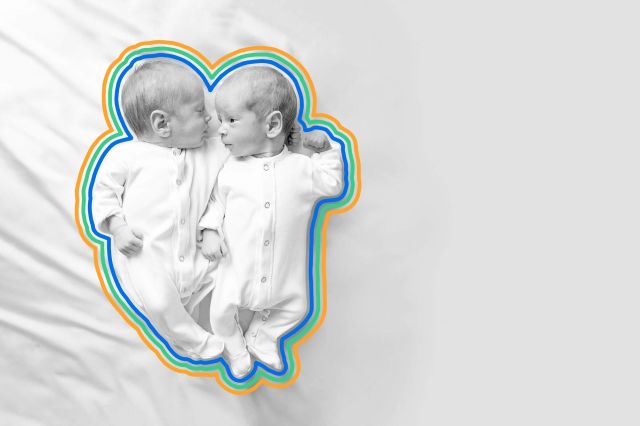
The World Currently Has the Most Twins It’s Ever Had
Many humans know the joy (and occasional annoyance) of having siblings. But some of us have a particularly unique relationship thanks to being half of a twin set. Being born a twin is relatively rare; in the United States, just 3.2% of new deliveries are twin births. But while that number may seem low, the world is actually experiencing the largest number of twins in known human history, largely influenced by advances in assisted reproductive technology. Researchers believe the number of twins born each year has increased over the last five decades, particularly when it comes to fraternal twins. A 2021 survey of 165 countries — about 99% of the world’s population — found that 1 in 42 babies born today is a twin, a statistic that equates to 12 twin births for every 1,000 pregnancies. That number is up from the 1980s, when just nine sets of twins were born for every 1,000 pregnancies. And it adds up — scientists believe some 1.6 million twins are born each year.

Identical Twins Have Different Fingerprints
Only 1 in 3 sets of twins are identical; the remaining two-thirds are considered fraternal, essentially siblings born at the same time who may or may not look alike. But even if identical twins seemingly appear as carbon copies, they do have some differences — such as their fingerprints. The patterns on our fingertips develop in utero, and how they look for the rest of our lives is heavily affected by our environment before birth. Blood pressure, umbilical cord length, and how fast a fetus grows all impact the final print design. Because identical twins share the same DNA, it’s likely their prints will be similar, though they’ll never be duplicates. In the history of fingerprint studies, no two people have ever had matching marks, including twins.

Ohio Hosts an Annual Twin Festival
The city of Twinsburg lives up to its name each summer, beckoning thousands of twins to northwestern Ohio to celebrate their distinctive sibling relationships. Since 1976, the Twins Days Festival has been the world’s largest gathering place for twins. Event organizers believe more than 2,145 twins (and other multiples, like triplets and quadruplets) attended the three-day fest in 2022, participating in events like the twin talent show, parade, and award ceremony. The event has also come to serve another purpose — by gathering so many multiples in one place, scientists have a chance to collect data on twins’ genetic and behavioral similarities (and differences), giving researchers more insight into how our DNA and environment may play roles in our health and well-being.
More Interesting Reads

Where You’re Born Increases Your Odds of Being a Twin
While the global number of twins is higher than ever before, there’s one part of the globe that holds the record for having the highest concentration of twins. Scientists believe the west coast of Africa, which includes countries such as Benin and Nigeria, beat the odds by a landslide on twin births. Studies from the 1970s on have pointed to both countries as the twin capitals, having anywhere from 27 to 40 sets of twins per every 1,000 births. It’s unclear to researchers why twins are more abundant in that region of the world, though doctors and citizens point to possible cultural factors, like the regional diet that includes okra leaves and yams (which may have plant compounds that play a role in maternal fertility).

Time Makes Twins Less Alike
Similarities and differences can be an endless topic of conversation for twins, though some research suggests that twins become less alike the older they get — at least, genetically. As they grow older, twins often make contrasting life choices and have different environmental exposures (aka interactions with chemical or biological substances, like cigarette smoke or UV radiation from the sun). This can cause differences in appearance or behavior as they age, or lead one twin to develop a medical condition the other does not have. A 2005 study from the Spanish National Cancer Center analyzed blood samples from twins and found that younger twins had more identical genes than older twins, especially those who lived apart — meaning that despite being born a duo, all twins eventually blaze their own paths in the world.












